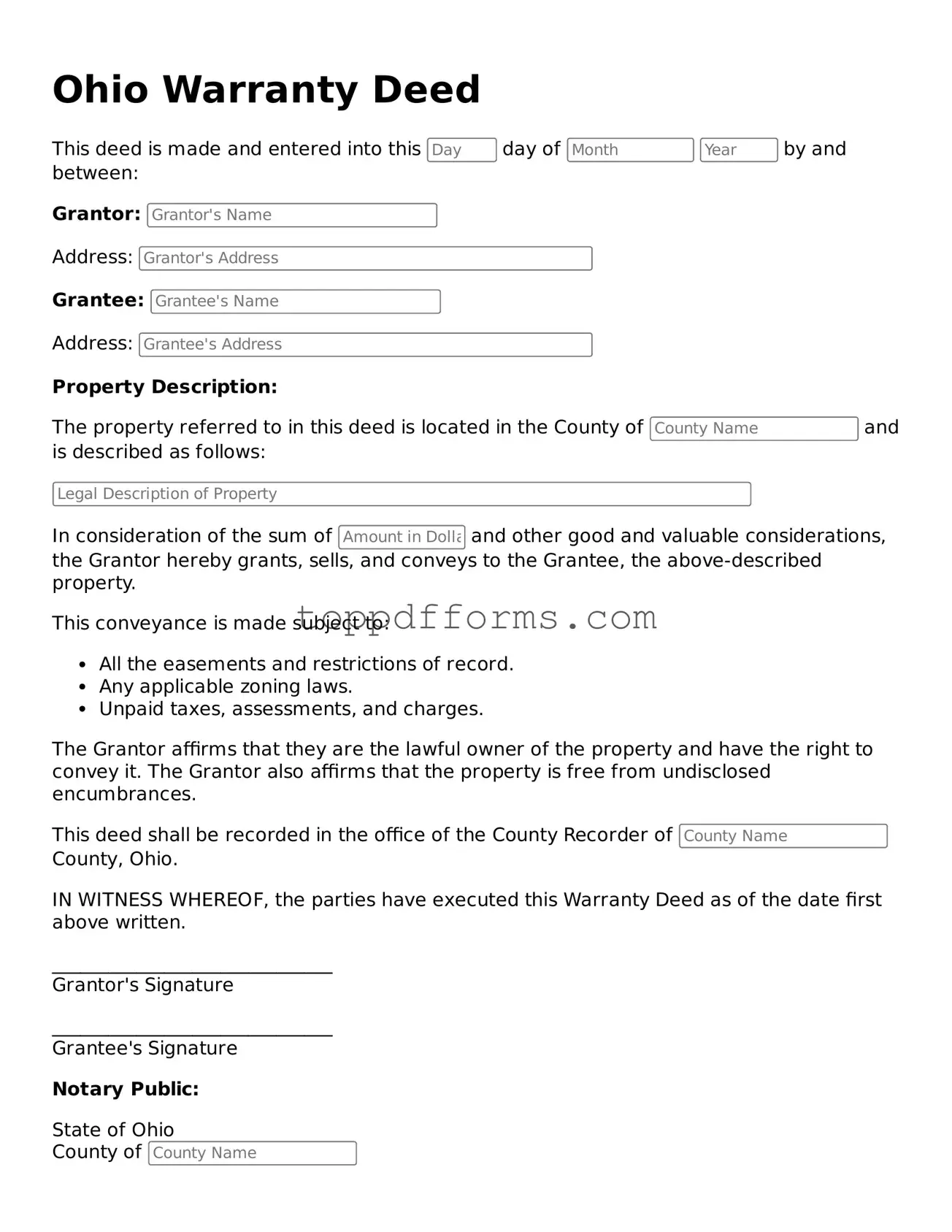What is an Ohio Deed form?
An Ohio Deed form is a legal document used to transfer ownership of real property from one party to another within the state of Ohio. This document outlines the details of the transaction, including the names of the parties involved, a description of the property, and the terms of the transfer. It is essential for the new owner to have a clear title to the property, and the deed serves as proof of this transfer.
What types of deeds are available in Ohio?
Ohio recognizes several types of deeds, each serving a different purpose. The most common types include warranty deeds, which guarantee that the seller holds clear title to the property and has the right to sell it; quitclaim deeds, which transfer any interest the seller may have in the property without making guarantees; and special warranty deeds, which provide limited warranties regarding the title. Choosing the right type of deed depends on the specific circumstances of the transaction.
How do I complete an Ohio Deed form?
To complete an Ohio Deed form, you will need to gather specific information. This includes the names and addresses of both the grantor (the seller) and the grantee (the buyer), a legal description of the property, and any relevant terms of the sale. It is important to ensure that all information is accurate and complete. Once the form is filled out, both parties should sign it in the presence of a notary public, who will then notarize the document.
Do I need to file the Ohio Deed form with the county recorder?
Yes, after the Ohio Deed form is completed and notarized, it must be filed with the county recorder’s office in the county where the property is located. This filing is crucial as it makes the transfer of ownership a matter of public record. There may be a fee associated with this filing, and it is advisable to check with the local recorder's office for specific requirements and fees.
Are there any taxes or fees associated with transferring property in Ohio?
Yes, transferring property in Ohio may involve certain taxes and fees. Generally, a conveyance fee is assessed based on the sale price of the property. Additionally, there may be local taxes or assessments that apply. It is essential to consult with a local tax authority or a real estate professional to understand the full scope of any financial obligations related to the property transfer.
